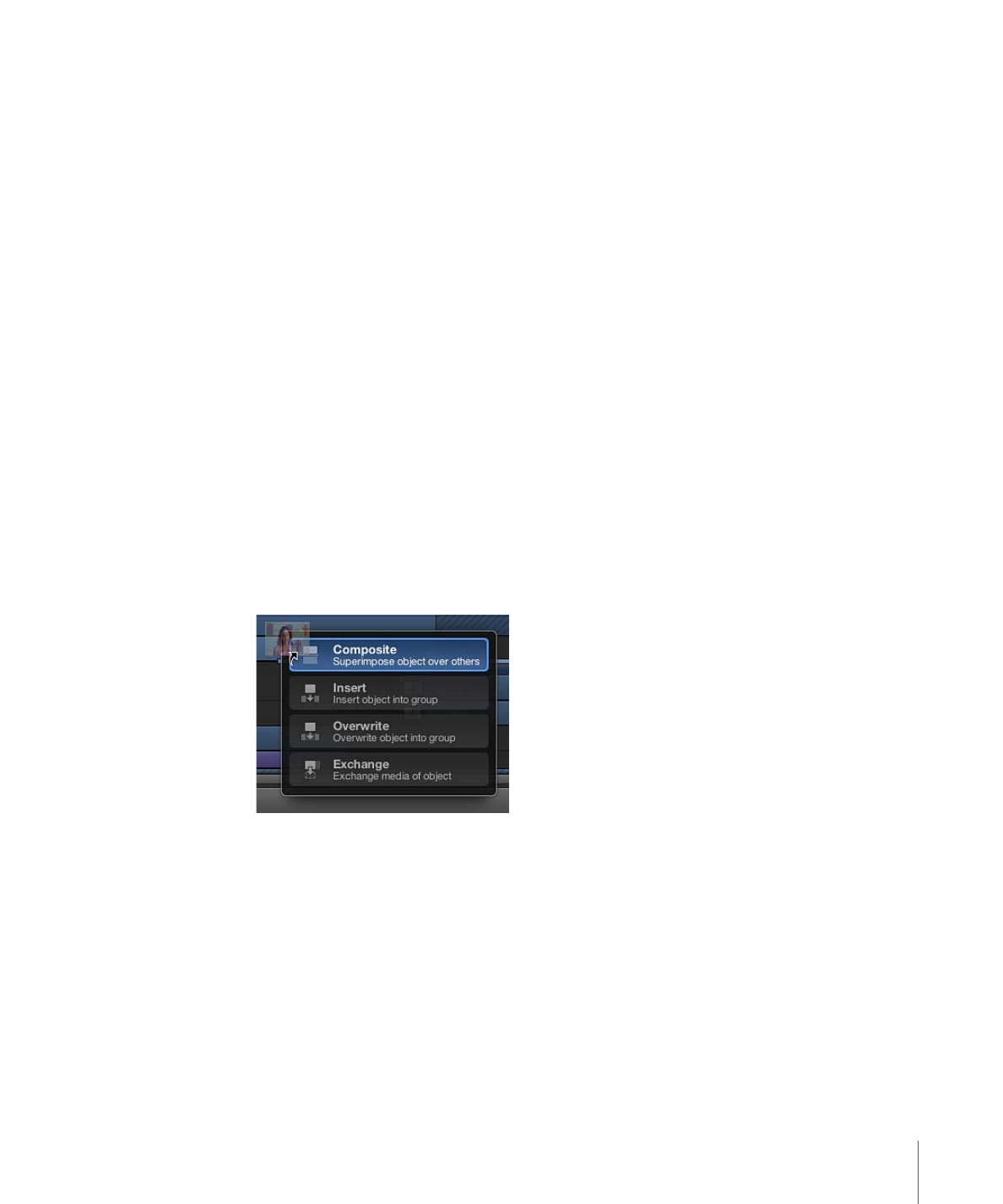
Nesting Groups and Layers
To help organize large groups of layers or to create some kinds of special effects, you can
place one group inside of another. This gives you the flexibility to create a group
containing multiple layers and effects, and then treat that entire group as a single layer
in another group. You could go further and take that “parent” group, combine it with
some other groups, and treat that group as a single element, and so on. This is called
nesting or grouping.
There are many reasons to nest layers or groups. Doing so allows you to simplify your
composite, grouping layers and effects objects (behaviors, filters, masks, and so on) into
fewer containers. Nesting also allows you to manipulate a group of layers and effects
objects as one. For example, you can take the individual letters of your title (each animated
on its own) and use nesting to animate the group of them across the screen. You can
also use nesting to create complex particle systems. You can nest multiple layers and
effects objects into a group, then use the entire group as the emitter cell. For more
information on particle systems, see
Working with Particles
.
Note: You cannot use the Group command with layers that are in different groups.
To place one group inside another
1
In the Timeline layers list, drag one group on top of another group.
A white border highlights the destination group.
2
Release the mouse button.
The first group is now nested inside the second group.
You can also select the layers you want and choose Object > Group (or press
Command-Shift-G).
Note: There is no limit to the number of groups you can nest.
To return a nested group to its original state
µ
Select the nested group, then choose Object > Ungroup (or press Command-Option-G).
The nested group is restored into individual layers. Any group in another group can be
ungrouped.
To remove a group from a nest
1
Drag the group out of the existing parent group to the area beneath all existing groups.
The outline of the Timeline layers list area becomes highlighted.
2
Release the mouse button.
The group is restored to primary group status.
328
Chapter 8
Using the Timeline

To delete a group, layer, or effects object track
1
Select the group, layer, or effects object in the Timeline layers list.
2
Press Delete.
You can also Control-click an object, then choose Delete from the shortcut menu.
All of the operations just described can also be performed with multiple tracks. For
example, rather than just moving one object from Group 1 to Group 3, you can select
two or three objects in Group 1 and move them all at once.
To select more than one group, layer, or effects object track
µ
Command-click to select tracks in the Layers list.